 |
 |
 |
| |
Frailty Worsens in 25% of 50-and-Older Thai HIV Group-But Improves in Many-Through 5 Years
|
| |
| |
IAS 2023, July 23-26, 2023. Brisbane
Mark Mascolini
Frailty status worsened over 5 years in one quarter of a Thailand HIV group 50 years old or older [1]. But this study by researchers at the HIV-NAT Red Cross AIDS Research Centre in Bangkok also found that most people who began follow-up with frailty improved their status during the study.
Research links frailty to poor health outcomes, diminished quality of life, and death in the general population [2]. In people with HIV studies also tie frailty to falls, hospital admissions, polypharmacy, and other comorbidities [3,4].
To determine the evolution of frailty in older people with HIV infection, the HIV-NAT team conducted a prospective study that enrolled people 50 or older who had long-term HIV control. They aimed mainly to learn how often frailty status-robust, prefrail, or frail-changed from the first determination to the outcome 5 years later. They classified people who died during the 5 years as frail. The researchers used the standard 5-item frailty phenotype, which includes unintended weight loss, exhaustion, slow walking, grip strength, and low energy. With 1 point for each positive finding, 0 meant robust, 1 to 2 points prefrail, and 3 to 5 points frail.
Of the 181 study participants, 62% were men and 18% ever drank alcohol. Median age stood at 54 (interquartile range [IQR] 52 to 59) and median antiretroviral therapy duration measured 16 years (IQR 12 to 19). When follow-up began, 54% of participants were taking a nonnucleoside combination, 36% a protease inhibitor, and 5% an integrase inhibitor. During follow-up 13% switched to the integrase inhibitor dolutegravir.
When follow-up began, 39% of participants were robust, 54% prefrail, and 7% frail. Through 5 years frailty status worsened in 25% of these people. Among people robust at the initial measure, 47.1% remained robust, 42.9% became prefrail, and 10.0% became frail. But sometimes frailty status improved in this group: Among people frail at the initial visit, 14.3% remained frail, 64.3% became prefrail, and 21.4% became robust.
Four of the 5 frailty components improved through the 5 years of follow-up: Percentage of abnormal weight loss results fell from 14% at baseline to 4% at 5 years (P = 0.002), percentage of low physical activity results dropped from 34% to 22% (P = 0.01), percentage of exhaustion results waned from 7% to 1% (P = 0.006), and percentage of slow gait speeds dwindled from 21% to 8% (P = 0.001). One frailty component apparently drove the worsening in 25% of this cohort through 5 years: Percentage of abnormal grip strength results climbed from 21% to 43% (P < 0.001).
A generalized estimating equation isolated three factors that independently predicted worsening frailty stage: Ever using alcohol tripled chances of worsening stage (adjusted odds ratio [aOR] 3.00, 95% confidence interval 1.37 to 6.55, P = 0.006). Each additional year of antiretroviral boosted odds to worsening frailty 10% (aOR 1.10, 95% CI 1.02 to 1.18, P = 0.011). (Each additional year of age did not independently drive worsening frailty-aOR 1.04, 95% CI 0.99 to 1.10, P = 0.11.) And starting treatment with a nonnucleoside regimen raised odds of worsening frailty stage 2.7-fold (aOR 2.71, 95% CI 1.35 to 5.44, P = 0.005).
Results indicated that frailty can be a fluid concept in some HIV populations. Although 25% of participants in this Thai study had a worse frailty status 5 years after an initial measure, substantial proportions of initially frail people saw their frailty rank improve through 5 years.
The HIV-NAT researchers did not try to explain these improvements in frailty status. But perhaps longer control of HIV through the 5 years with newer, less toxic antiretrovirals prompted people to lead more active lives that improved frailty-related deficits. Or improving frailty rank over 5 years could simply mean some people test better or worse on any given day, even days 5 years apart.
References
1. Apornpong T, Han WM, Hiransuthikul A, et al. Frailty transition among older adults living with HIV in Thailand: a five-year prospective study. IAS 2023, July 23-26, 2023. Brisbane. Abstract EPB0203.
2. Theou O, Brothers TD, Mitnitski A, Rockwood K. Operationalization of frailty using eight commonly used scales and comparison of their ability to predict all-cause mortality. J Am Geriatr Soc. 2013;61:1537-1551. doi: 10.1111/jgs.12420.
https://agsjournals.onlinelibrary.wiley.com/doi/10.1111/jgs.12420
3. Rothman MD, Leo-Summers L, Gill TM. Prognostic significance of potential frailty criteria. J Am Geriatr Soc. 2008;56:2211-2216. doi: 10.1111/j.1532-5415.2008.02008.x. PMID: 19093920.
https://agsjournals.onlinelibrary.wiley.com/doi/10.1111/j.1532-5415.2008.02008.x
4. Erlandson KM, Allshouse AA, Jankowski CM, Duong S, Mawhinney S, KohrtWM, Campbell TB. Comparison of functional status instruments in HIV-infected adults on effective antiretroviral therapy. HIV Clin Trials. 2012;13:324-34. doi: 10.1310/hct1306-324. https://www.tandfonline.com/doi/abs/10.1310/hct1306-324
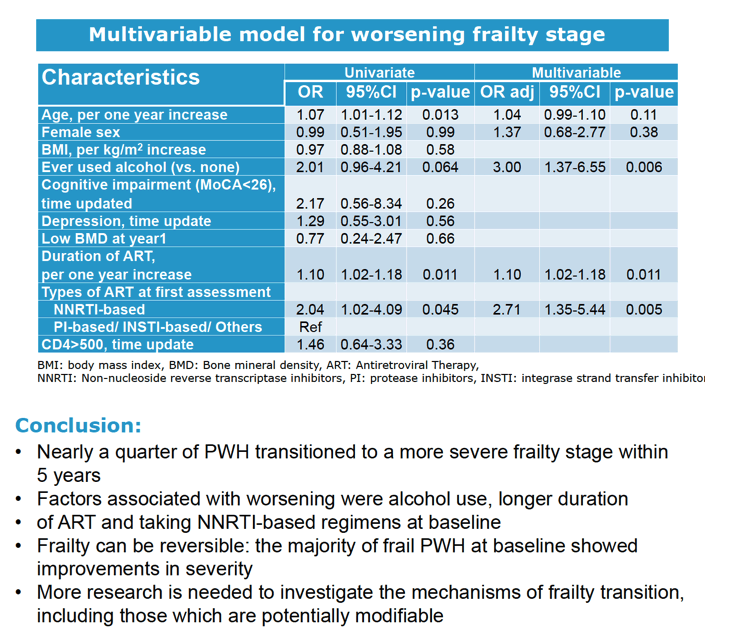
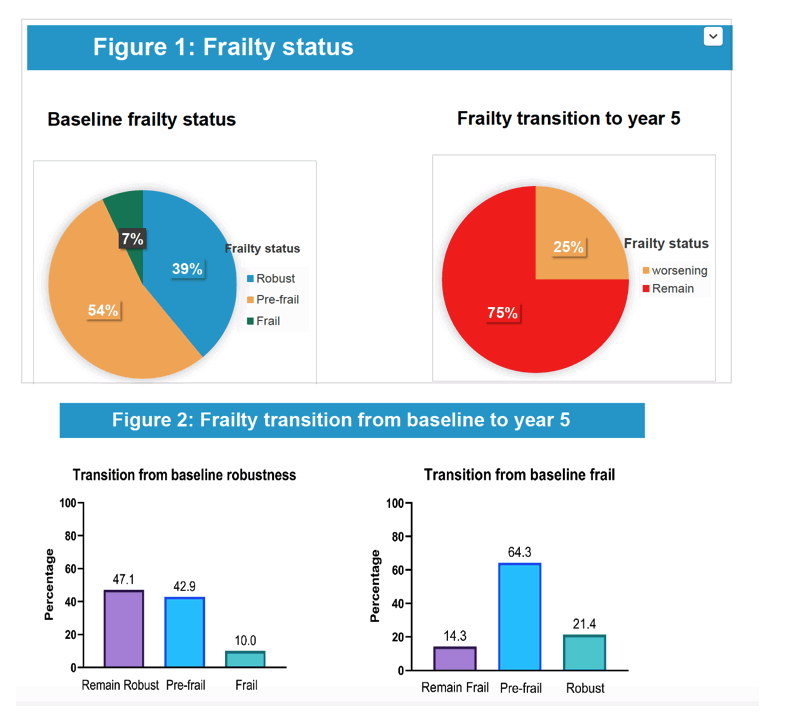
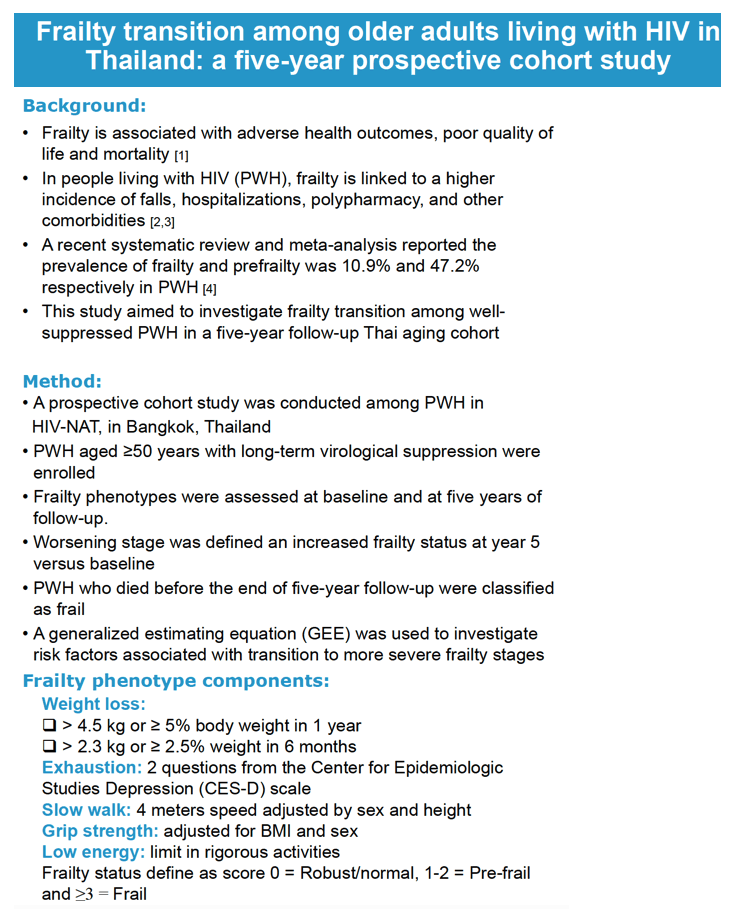
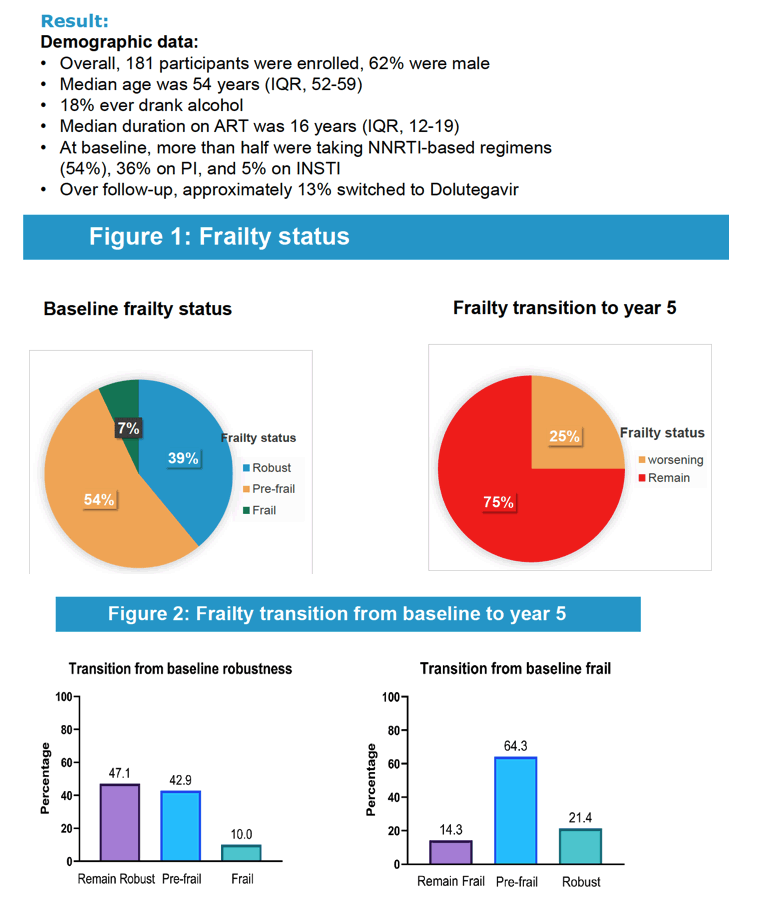
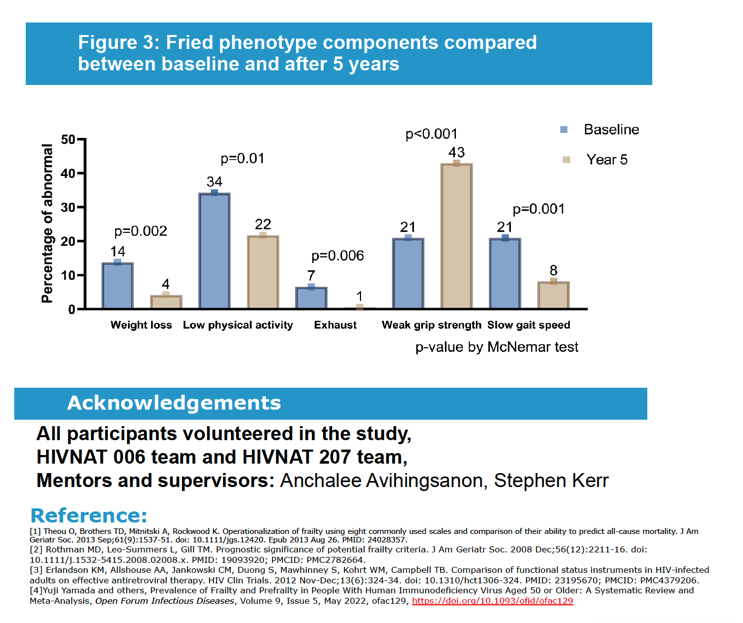
|
| |
|
 |
 |
|
|